Unlocking the Benefits of Using a Period Cup: Your Ultimate Guide to Comfort and Sustainability
What is a Period Cup?
A period cup, often referred to as a menstrual cup, is a reusable bell-shaped device made from medical-grade silicone, rubber, or elastomer. It is designed to be inserted into the vagina during menstruation to collect menstrual fluid rather than absorb it like traditional pads or tampons. The cup creates a seal against the vaginal walls, preventing leaks and providing reliable protection for up to 12 hours, depending on the flow intensity. Unlike disposable products, a single period cup can last for several years, making it an economical and sustainable choice for menstrual care.
The concept of the menstrual cup is not new; it has been around since the 1930s. However, it has gained significant popularity in recent years due to increasing awareness of environmental issues and the desire for more comfortable and economical menstrual solutions. Users appreciate the convenience of not having to frequently change pads or tampons, especially during busy days or overnight. The period cup is also free from the harmful chemicals and fragrances often found in disposable products, which can cause irritation and allergic reactions in some users.
Period cups come in various sizes and shapes to accommodate different body types and menstrual flows, making them a versatile option for many. Brands often provide guidelines to help users choose the right size based on their age, childbirth history, and flow intensity. This customization ensures that each person can find a cup that fits comfortably and securely, enhancing their overall menstrual experience.
The Environmental Impact of Period Products
Traditional menstrual products, such as pads and tampons, have a significant environmental footprint due to their disposable nature. It is estimated that the average person who menstruates uses approximately 11,000 to 16,000 disposable menstrual products in their lifetime. These products often contain plastic components, which can take hundreds of years to decompose. Additionally, the production and disposal of these items contribute to pollution and the depletion of natural resources.
In contrast, period cups offer a sustainable alternative that can drastically reduce waste. A single period cup can be used for up to ten years, replacing the need for thousands of disposable products. This longevity not only minimizes the volume of waste generated but also reduces the demand for raw materials and energy required for manufacturing and transportation. By choosing a period cup, individuals can significantly lower their carbon footprint and support a greener planet.
Moreover, the environmental benefits of period cups extend beyond waste reduction. The production of disposable menstrual products involves the use of pesticides, herbicides, and other chemicals that can harm ecosystems and wildlife. In comparison, period cups are made from medical-grade materials that are safe for both the body and the environment. By switching to a period cup, users can contribute to the preservation of natural habitats and the well-being of future generations.
Comfort and Convenience: Why Choose a Period Cup?
One of the primary reasons individuals switch to period cups is the enhanced comfort they provide. Unlike pads that can feel bulky and tampons that may cause dryness, period cups are designed to be worn internally, creating a seal that prevents leaks without causing discomfort. The soft, flexible material conforms to the body's shape, allowing for a natural and unobtrusive fit. Many users report forgetting they are even wearing a cup, which speaks to the level of comfort it offers.
In terms of convenience, period cups surpass traditional menstrual products in several ways. With a capacity to hold more fluid than the average tampon or pad, period cups allow users to go longer between changes—up to 12 hours, depending on the flow. This extended wear time is particularly beneficial for those with busy lifestyles, as it reduces the need for frequent bathroom breaks. Additionally, period cups are ideal for overnight use, providing uninterrupted sleep without the worry of leaks.
Another aspect of convenience is the cost-effectiveness of period cups. Although the initial investment may be higher than a box of tampons or pads, the long-term savings are substantial. A single period cup can last for several years, eliminating the need for monthly purchases of disposable products. This economic advantage, combined with the environmental benefits, makes period cups an attractive option for those seeking a more sustainable and budget-friendly menstrual solution.
How to Use a Period Cup Effectively
Using a period cup effectively requires a bit of practice, but once mastered, it becomes a seamless part of the menstrual routine. To begin, it is essential to wash your hands thoroughly to maintain hygiene. Then, fold the cup using one of several folding techniques, such as the C-fold or punch-down fold, to make insertion easier. Gently insert the folded cup into the vagina, aiming toward the tailbone, and release it to allow it to open and create a seal against the vaginal walls.
Ensuring the cup is properly positioned is crucial to prevent leaks. One way to check this is by running a finger around the base of the cup to feel if it has fully opened. If it has not, gently rotate the cup or use a kegel exercise to help it pop open. Once in place, the cup should sit low in the vaginal canal, with the stem accessible for removal but not protruding. It may take a few cycles to find the most comfortable position and technique, so be patient and give yourself time to adjust.
When it is time to remove the cup, wash your hands again and gently pinch the base of the cup to break the seal. Slowly pull the cup out, being careful not to spill the contents. Empty the collected fluid into the toilet, rinse the cup with water, and reinsert it if needed. At the end of your cycle, sterilize the cup by boiling it in water for a few minutes to ensure it is clean and ready for the next use. With proper care and practice, using a period cup can become a straightforward and reliable part of your menstrual care routine.
Period Cup vs. Traditional Menstrual Products
When comparing period cups to traditional menstrual products, several factors come into play, including comfort, cost, convenience, and environmental impact. One of the most notable differences is the level of comfort period cups provide. Unlike pads that can cause chafing or tampons that may lead to dryness, period cups are designed to sit comfortably inside the vagina without causing irritation. They also hold more fluid, reducing the frequency of changes and providing a more reliable solution for heavy flows.
In terms of cost, period cups offer significant savings over time. While the initial purchase price of a period cup may be higher than a box of tampons or pads, the long-term savings are substantial. A single cup can last for several years, eliminating the need for monthly purchases of disposable products. This makes period cups an economical choice for those looking to reduce their menstrual care expenses.
The convenience of period cups is another advantage over traditional products. With the ability to wear a cup for up to 12 hours, users can go about their day without the constant need to change their menstrual product. This is especially beneficial for those with busy schedules or for overnight use. Additionally, period cups generate less waste, making them a more environmentally friendly option. By reducing the number of disposable products used, individuals can contribute to a healthier planet and support sustainable living.
Common Myths and Misconceptions About Period Cups
Despite their many benefits, period cups are often surrounded by myths and misconceptions that can deter potential users. One common myth is that period cups are difficult to use or uncomfortable to insert. While it may take some practice to get used to the insertion and removal process, many users find that the comfort and convenience of period cups far outweigh the initial learning curve. With proper technique and patience, most individuals can master the use of a period cup within a few cycles.
Another misconception is that period cups are unhygienic or unsafe. In reality, period cups are made from medical-grade materials that are safe for the body and easy to clean. Regular washing with soap and water, combined with periodic sterilization by boiling, ensures that the cup remains hygienic and free from harmful bacteria. Additionally, because period cups collect rather than absorb menstrual fluid, they do not disrupt the natural vaginal environment, reducing the risk of infections and irritation.
Some individuals also worry that period cups may cause leaks or be difficult to use during physical activities. However, when properly inserted, period cups create a secure seal that effectively prevents leaks, even during intense physical activities such as swimming, running, or yoga. The flexibility and design of period cups allow them to move with the body, providing reliable protection and comfort throughout the day. By addressing these myths and misconceptions, more individuals can feel confident in making the switch to a period cup.
Choosing the Right Period Cup for You
Selecting the right period cup is crucial for a comfortable and effective menstrual experience. With various sizes, shapes, and brands available, it can be overwhelming to choose the perfect cup for your needs. Start by considering your age, childbirth history, and menstrual flow, as these factors can influence the size and capacity of the cup. Many brands offer sizing guides to help you determine the best fit based on these criteria.
Another important factor to consider is the firmness of the cup. Some cups are designed to be firmer, providing a more secure seal for those with strong pelvic floor muscles or who engage in physical activities. Softer cups, on the other hand, may be more comfortable for those with sensitive anatomies or who have experienced discomfort with firmer cups. It may be helpful to read reviews or seek recommendations from others who have similar preferences and experiences.
Lastly, consider the stem length and design of the cup. Some period cups have longer stems that can be trimmed to the desired length, while others have shorter or no stems at all. The stem is used for removal, so it is essential to choose a design that feels comfortable and accessible for you. By taking the time to research and consider these factors, you can find a period cup that fits your body and lifestyle, ensuring a positive and comfortable menstrual experience.
Cleaning and Maintenance Tips for Period Cups
Proper cleaning and maintenance of your period cup are essential for ensuring its longevity and hygiene. After each use, rinse the cup with cold water to prevent staining and then wash it with warm water and a mild, fragrance-free soap. Avoid using harsh chemicals or antibacterial soaps, as these can degrade the material and cause irritation. Thoroughly rinse the cup to remove any soap residue before reinserting it.
At the end of your menstrual cycle, it is important to sterilize the cup to eliminate any lingering bacteria. Boil the cup in a pot of water for 5-7 minutes, making sure it does not touch the bottom of the pot to avoid scorching. Alternatively, you can use a microwave sterilizer or sterilizing tablets designed for menstrual cups. Allow the cup to cool and dry completely before storing it in a breathable bag or container until your next cycle.
Regular inspection of your period cup is also important to ensure it remains in good condition. Check for any signs of wear and tear, such as cracks, discoloration, or changes in texture. If you notice any damage, it may be time to replace the cup to maintain its effectiveness and safety. With proper care and maintenance, your period cup can provide reliable and sustainable menstrual care for years to come.
Conclusion: Embracing Comfort and Sustainability
Making the switch to a period cup offers numerous benefits, from enhanced comfort and convenience to significant environmental and economic savings. By choosing a reusable menstrual product, individuals can reduce their waste, lower their carbon footprint, and support a more sustainable future. The versatility and customization options available with period cups ensure that everyone can find a product that fits their unique needs and preferences.
While the initial adjustment period may require some patience and practice, the long-term advantages of using a period cup are well worth the effort. By addressing common myths and misconceptions, more individuals can feel confident in making the switch and experiencing the improved comfort and reliability that period cups provide. The journey towards better periods and a greener future starts with a simple shift in menstrual care.
Embrace the comfort, convenience, and sustainability of period cups, and join the growing community of individuals who are transforming their menstrual experience for the better. With the right information and support, you can unlock the myriad benefits of using a period cup and contribute to a healthier planet. Adventure awaits—let’s dive in!





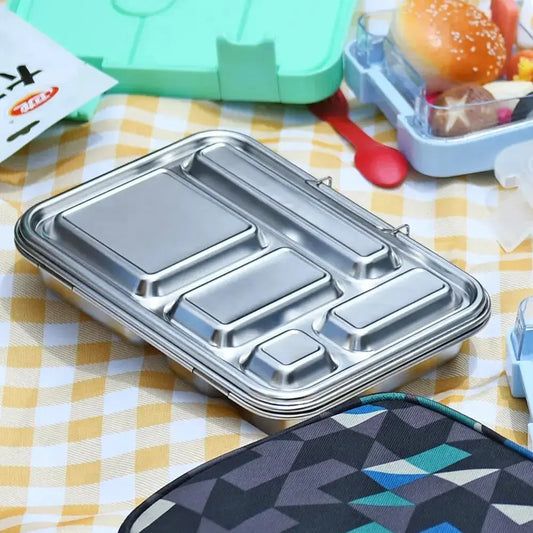
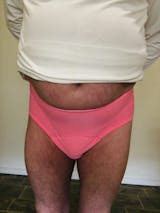
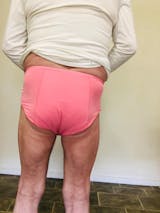

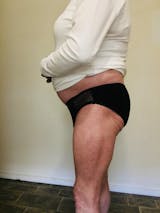
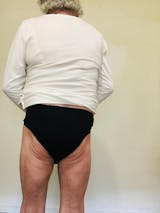
0 comments